The Planetary Analog Simulation Laboratory (PASLAB)
- German Aerospace Center (DLR), Institute of Planetary Research, Berlin, Germany (andreas.lorek@dlr.de)
Introduction
The PASLAB laboratory has been created to simulate the current or previous atmospheric conditions on Mars or Earth. The focus lies on astrobiology experiments, sensor calibration and sensor development, e.g. [1, 2]. Measurements typically run from one day to several weeks or months. In the framework of astrobiological experiments, investigations have been carried out into the survivability of lichens e.g. [3, 4], cyanobacteria [5] and fungi [6] under Martian-like conditions. In sensor experiments the focus is on the development of trace humidity sensors and the calibration of humidity sensors under conditions ranging from terrestrial to the harsh conditions of Mars. This contribution will present an overview of the laboratory’s capabilities and recent successes with a view to generating new and interesting collaborations with external scientists.
PASLAB overview
The laboratory consists of two sections: a section for handling biological samples and a section with experimental setups for exposure under extreme conditions as well as sensor investigations and calibration. Figure 1 shows images of key parts of these setups. For the growth of biological cultures there are two compressor cooled incubators (VWR IL 68R), which can be run at different temperatures optimized for different life forms. A laminar flow box allows samples and cultures to be prepared under sterile conditions. An anaerobic workstation (Whitley A85 TG) is used for sample culture and preparation, as well as storage, in an oxygen-free environment. For initial characterization and processing of samples the laboratory has an imaging PAM (Walz IMAG K5) for fluorescence measurement, a UV/Visible Spectrophotometer (JENWAY 6305), a thermal cycler (Kisker-Biotech 3PRIMEX 48), and a high-speed centrifuge (Eppendorf 5430R).
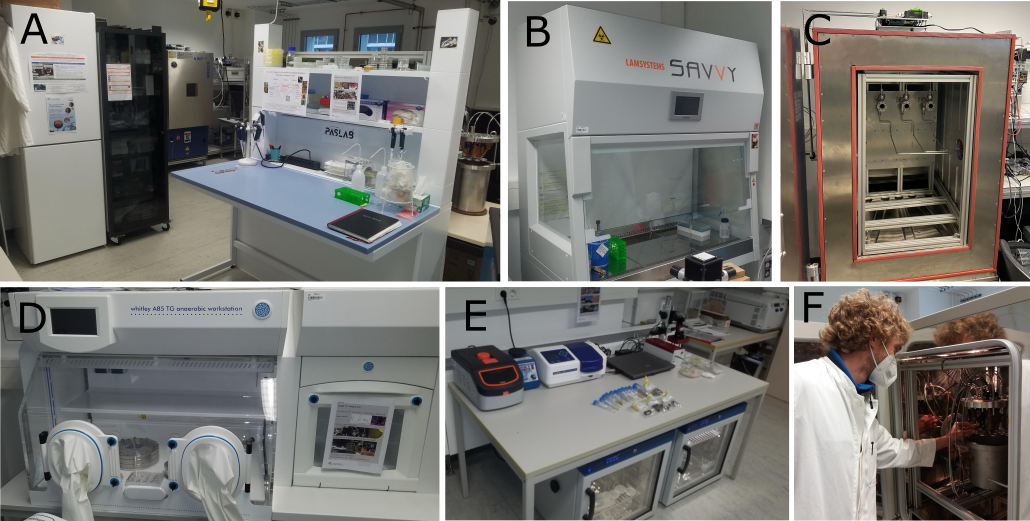
Figure 1: An overview of the laboratory. A: Biological sample preparation bench. B: Laminar flow box. C: Environmental chamber set up for sensor investigations. D: Anaerobic workstation. E: Incubators and sample preparation and analysis equipment. F: Mars chamber
The exposure and sensor investigation section of the laboratory consists of three separate setups based around three climate chambers: ATT 340TC (-72°C to 180°C), KWP 240 (-75°C to 130°C) and VT 4002 (- 40°C to 130°C). Each chamber has a dedicated gas mixing system using mass flow controllers to generate gas compositions. Available gases are currently N2, CO2, H2, O2, CH4 and Ar. A gas humidification system is used to set the humidity of a matrix gas in a stepless way from -80°C to 10°C frost point (0,5 ppmV to 12000 ppmV) with a precision of better than ±0.1°C FP. Three dew point mirrors (MBW 373LX, Michell S8000 RS and Michell S8000 integrale) dedicated to each setup are used to measure the humidity of the generated gas flows as a control. A schematic diagram of the setup applied to sensor investigations is shown in Figure 2.
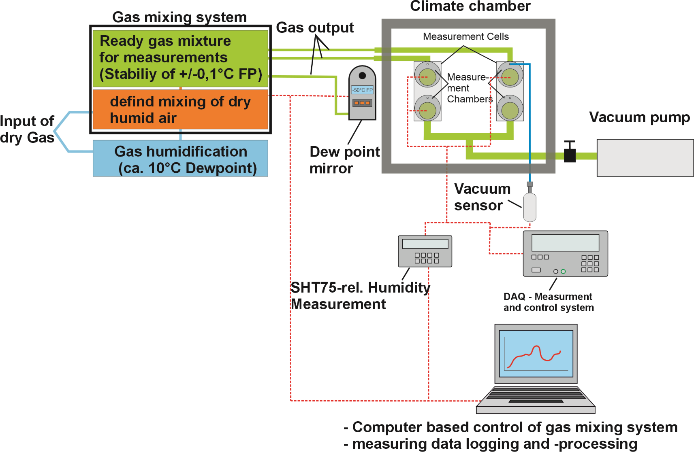
Figure 2: Schematic diagram of an experiment system for sensor test and calibration
For the exposure of biological samples to Martian conditions, an experimental chamber has been developed, shown in Figure 3. The chamber has a volume of 10.3 L, inner diameter of 20 cm and height of 32 cm. The gas inlet is connected to a gas mixing system and the outlet is connecting to a vacuum pump. A rotating sample holder carousel contains positions for up to eight 35mm petri dishes. Fiber optic cables transmit light from a 150W Xenon lamp and illuminate 4 of the sample positions. Two Sensirion SHT-75 relative humidity sensors and two Pt100 temperature sensors log the environmental conditions in the chamber during experiments. The photosynthetic yield of each sample can be measured in real-time during experiments with a Mini-PAM photosynthetic yield analyser (Walz GmbH) by rotating the sample carousel. System control and data acquisition is achieved using a National Instruments system and Labview software, allowing full automation of experimental runs. A trace gas analyser mass spectrometer (Pfeiffer Vacuum HPA 220 M2) is being integrated with the setup to monitor variation of gas composition in real time.
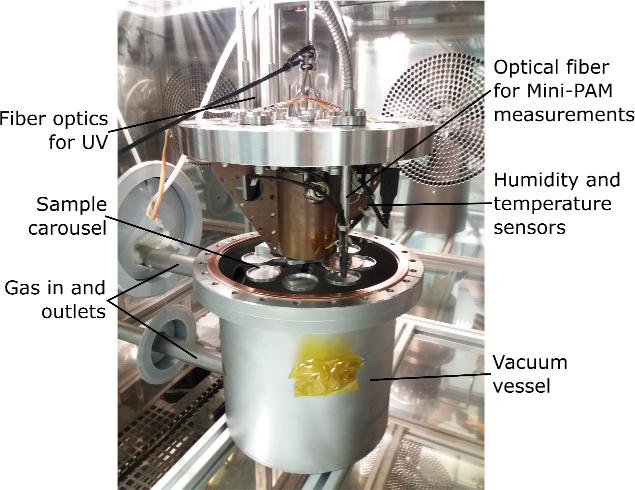
Figure 3: The Mars simulation chamber open, showing the sample positions.
The parameters pressure, temperature, humidity, light ON/OFF, gas mixture and flow are computer controlled and can be changed during the experiment. In general, it is possible to simulate a variety of conditions from Martian to terrestrial, as well as other conditions with cyclical variation over weeks or months.
Figure 4 shows a Typical run of an exposure experiment and figure 5 for a sensor experiment (see image C in figure 1).
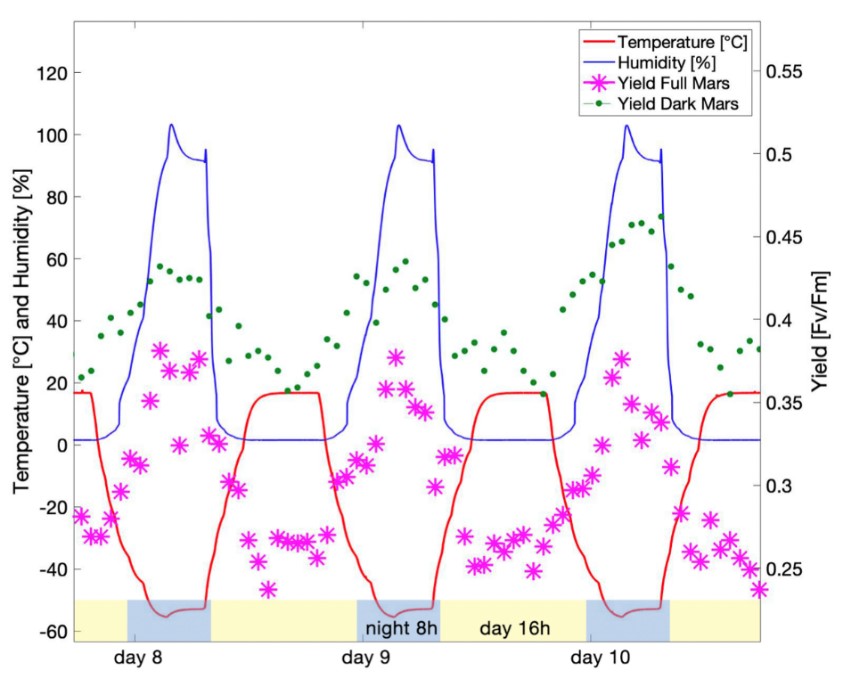
Figure 4: Detail of the day-night cycles of the simulated Mars conditions (temperature, red thick line; humidity, blue thin line) and fluorescence variation values for both the treatments (FM and DM) [4].
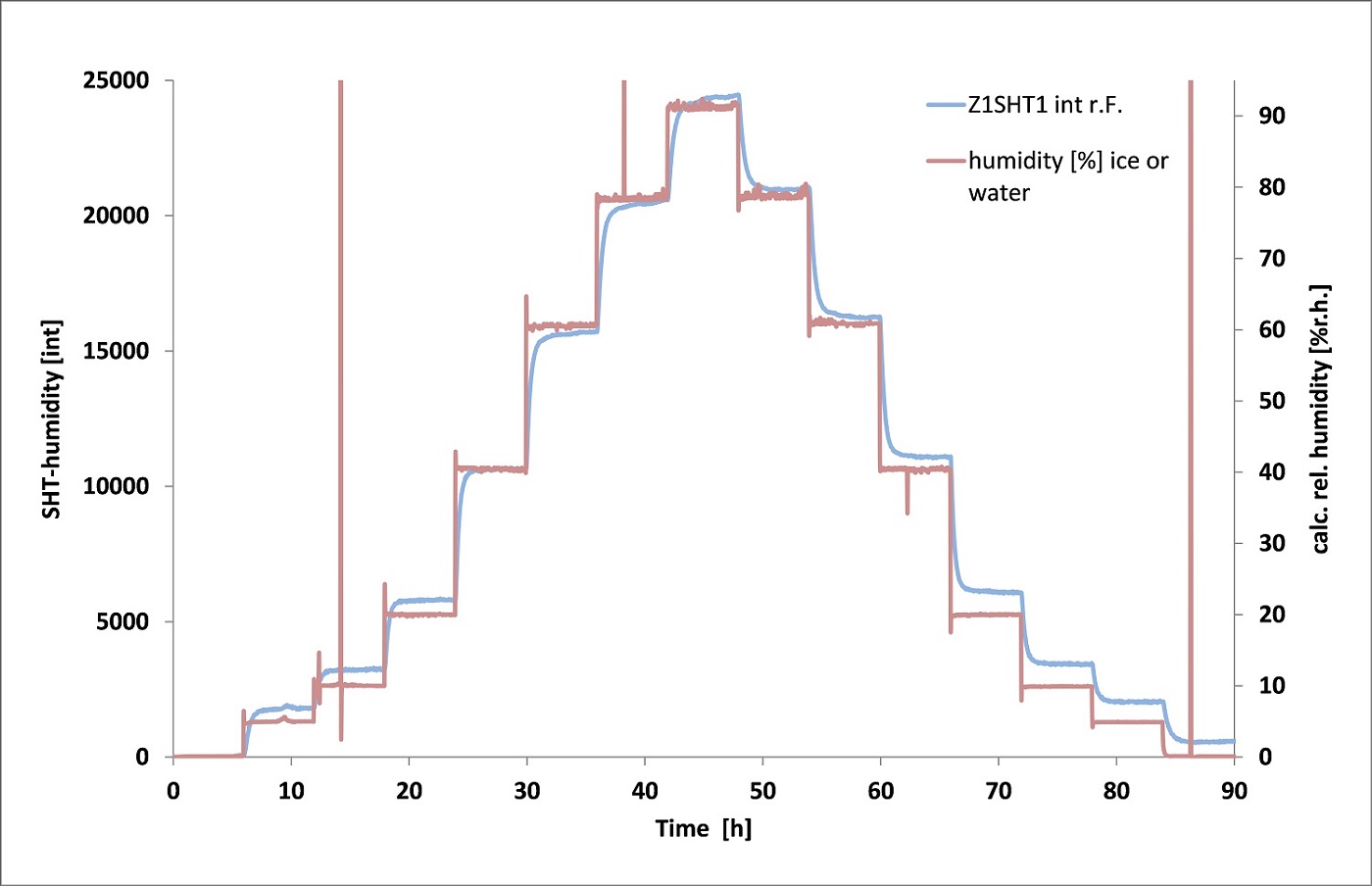
Figure 5: An example calibration run is show opposite. T = -60 °C, P = 8 mbar, Frost point (reference measurement at atmospheric pressure) between -45 to -20 °C
Summary
The experimental capabilities of PASLAB focus on questions relating to habitability and the search for life as well as humidity sensors development and calibration, a topic which is closely related to biological investigations. The three environmental chambers and dedicated gas mixing systems allow simultaneous measurements under different conditions and for different purposes. The systems allow the gas humidity to be precisely set over a wide range of temperatures and pressures and full experiment automation allows long runs of up to several months.
References: [1] Hieta, M. et al. (2022) Planetary and Space Science 223 105590. [2] Lorek, A. (2014) J. Sens. Sens. Syst., 3, 177–185. [3] Noetzel de la T. et al. (2018) Front. Microbiol. 9:308. [4] Lorenz, C. et al. (2023) Sci Rep 13, 4893. [5] de Vera, J-P et al. (2014) International Journal of Astrobiology 13(1):35-44. [6] Zakharova, K. et al. (2014) Sci Rep 4, 5114.
How to cite: Lorek, A., Garland, S. P., Baqué, M., and Helbert, J.: The Planetary Analog Simulation Laboratory (PASLAB), Europlanet Science Congress 2024, Berlin, Germany, 8–13 Sep 2024, EPSC2024-720, https://doi.org/10.5194/epsc2024-720, 2024.